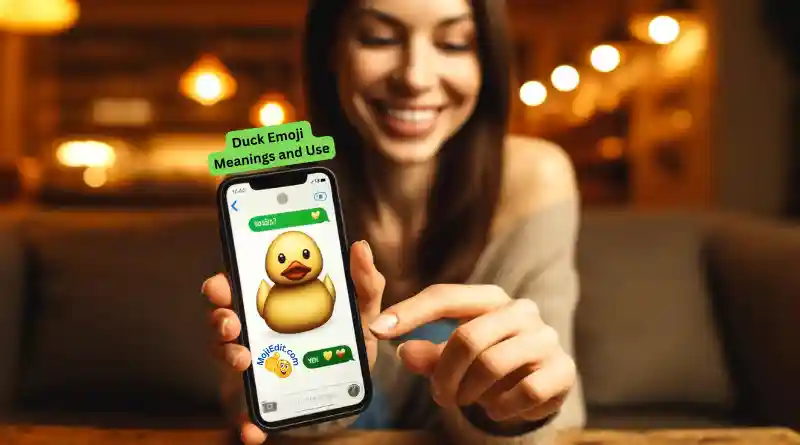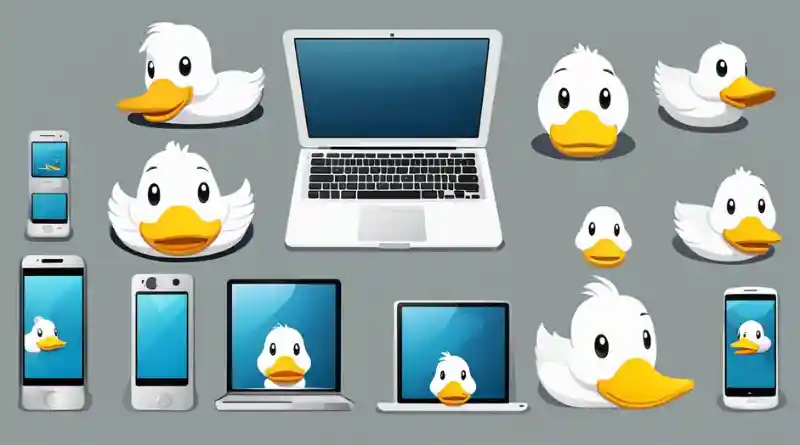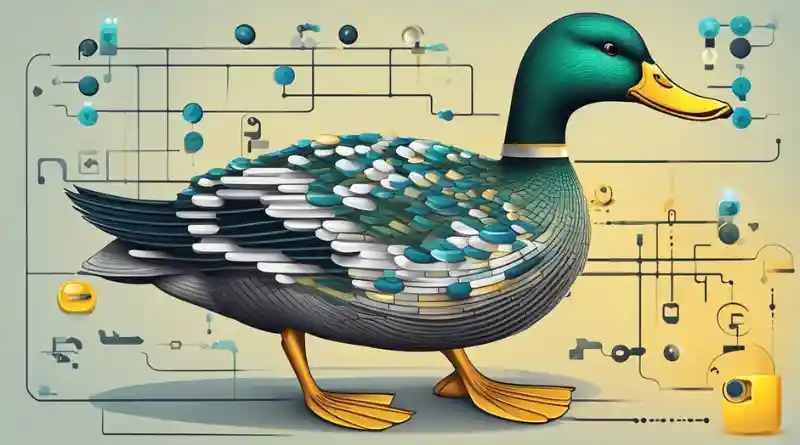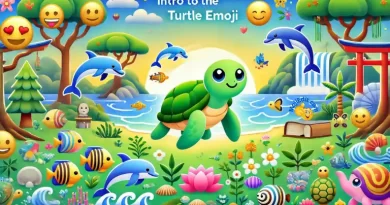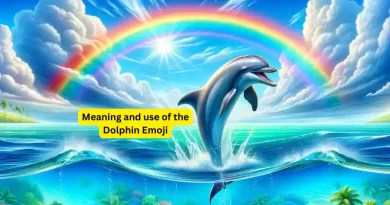Duck Emoji 🦆: Unveiling the Quirky Fun Behind the Feathers
The duck emoji, quack quack has waddled its way into our digital chats, becoming a symbol that goes beyond just a cute bird. 🦆 It is one of my favorite animal emojis. With its familiar shape and friendly expression, this emoji captures a bunch of meanings and uses that are more than just about the bird itself. Whether you’re showing your love for nature or adding a fun twist to your messages, the duck emoji is as versatile as a duck’s wingspan. It’s a colorful addition to the emoji family, bringing personality and flair to our online convos.
The Evolution of the Duck Emoji
Over time, the duck emoji has gone through some fascinating changes. Its design has been tweaked to fit better into the ever-changing digital world. Despite these updates, the essence of the duck remains the same across different platforms. The subtle design differences can change how we see the emoji, from symbolizing peace to adding a funny quack to our texts. As we use this charming character in our messages, it’s clear that the duck emoji is more than just a tiny icon—it’s a character with big potential in our online communication.
Key Takeaways
- The duck emoji is used for many expressive purposes in digital conversations.
- Its design has evolved but still keeps a consistent identity across platforms.
- The emoji acts as both a literal and figurative symbol in digital chats. 🦆
The Evolution of Duck Emoji
As we dive into the history of the 🦆 emoji, it’s fascinating to see its journey from a simple digital icon to a cherished tool for expression across various platforms.
Origins in Unicode
The 🦆 emoji first waddled into the digital world as part of Unicode 9.0. Launched in 2016, this feathery icon was introduced to represent our feathered friends in electronic communication. Initially, the emoji featured a duck on water with details like a few hairs on its head, which later transformed into a more simplified version. Apple, Android, and Microsoft each developed their own renditions of the 🦆 emoji, tailoring it to match their distinct aesthetic styles. As a result of these changes, the duck became more than just a bird; it became a symbol for conveying a variety of messages in our texts.
Popularity and Usage
Endearingly quirky and fun, the 🦆 emoji rapidly gained popularity in our messages. Now, it’s not just about the animal; it’s become a staple for expressing feelings of happiness or even signifying calmness, much like the phrase “like water off a duck’s back.” The emoji’s versatility extends across platforms like WhatsApp and messaging apps on both iPhones and Android devices. Moreover, the 🦆 emoji adds a playful tone that’s especially appreciated in informal conversations and social media, making it a regular in our emoji repertoire. Whether it’s to brighten up a friend’s day or to add a dash of humor to our messages, the 🦆 emoji has certainly carved out its niche in digital communication.
Copy and Paste the Duck Emoji
Want to spread some ducky cheer in your messages or posts? You can easily copy the duck emoji and paste it wherever you need a little splash of digital cuteness. Just follow these simple steps:
- Click the “Copy” button below to copy the duck emoji to your clipboard.
Emoji Copied! 🦆
- Go to the place where you want to use the emoji and right-click on the text field.
- Choose “Paste” from the context menu, or simply use the keyboard shortcut Ctrl + V (Windows) or Cmd + V (Mac) to paste the emoji.
And voilà! You’re all set to add some playful charm to your conversations.
Design Variations Across Platforms
We’ve noticed something super interesting: emojis, specifically the duck emoji, often look different depending on where you see them. It’s like each brand wants to add their own flair to these little characters.
Apple vs Android
Apple: Apple’s duck emoji is known for its detailed and somewhat realistic design. With its bright yellow body and orange bill, the emoji on iOS gives off a friendly and familiar look. Curiously, the water ripples, which were a nice touch showing the duck floating, have vanished in recent iOS versions.
Android: Meanwhile, Android has often taken a more stylized approach. The Google designs have varied significantly over the years but currently, the duck’s got a plumper, rounder body with more simplistic detailing than Apple’s version. Some previous Android designs even had a blue body, which was a huge departure from the classic yellow duckling we’re used to!
Web and Social Media Platforms
Web Platforms: On web platforms, the duck emoji can vary dramatically. Some might look super simplistic or cartoonish, while others might try to be more detailed. For example, the duck emoji on Microsoft’s platforms, tends to lean toward a flatter design with fewer shadows and highlights, still keeping the charm but less three-dimensional compared to Apple’s.
Social Media: When it comes to social media platforms like WhatsApp, emojis need to look good on a wide range of devices. WhatsApp’s emoji design is consistent across both Android and iOS, offering a middle ground with its version of the duck emoji. This makes sure that no matter whether we’re on an iPhone or an Android smartphone, the emoji maintains its cuteness and expressiveness.
Duck Emoji in Digital Communication
The duck emoji 🦆 has waddled its way into our messages and posts, becoming more than just a cute symbol. It’s a versatile tool that enriches our digital conversations in unique ways, from conveying emotions to enhancing viral content.
Emoji Semantics and Slang
When we toss the 🦆 emoji into a chat, it’s likely to evoke a smile or a chuckle. Often, we use it to refer to actual ducks or to express a fondness for the aquatic birds. But beyond that, it’s also associated with various slang interpretations. For instance, if we say someone “is a duck,” it might mean they’re staying calm on the surface but are hustling hard out of sight, much like ducks appear to glide smoothly on water while paddling furiously underneath.
Additionally, the 🦆 emoji is sometimes used to represent the concept of ‘ducking’ away or avoiding something. In a playful context, teens might pop this emoji into a conversation to ‘duck out’ of a serious topic or deflect a question with humor.
Moreover, it has taken on layers of meaning in meme culture. A picture of a literal duck might be captioned with it to add character, or it may be included in text to indirectly reference popular “duck” memes circulating on social media platforms.
Emoji Combinations
Emoji combinations are like our modern-day hieroglyphs, and blending the 🦆 emoji with others opens up a world of creative expression. By teaming up the duck with different emojis, teens shape nuanced, often humorous messages that resonate with their peers. A combination of 🦆 and 🌊, for instance, illustrates a duck in its natural water habitat, sometimes implying ‘smooth sailing’ or relaxation.
Another popular combo, 🦆 + 😂, can signify something is “quacking us up”, suggesting a pun or a joke about ducks. For the more cinematically inclined, pairing 🦆 with 🎥 might hint at a famous duck-themed viral video or even an upcoming film featuring our feathered friends.
On social media, when sharing a refreshing day at the lake, we might throw in a 🦆 emoji with a sunshine 🌞 to perfectly capture the vibe. Such posts, especially when they’re clever or endearing, have a good chance of being liked, retweeted, or reposted, making the duck emoji a part of viral trends.
Lastly, when crafting the caption for a duck meme, savvy use of the 🦆 emoji, along with relevant trending hashtags, can amplify the meme’s reach and tickle the funny bones of many followers, potentially making the content fly across feeds.
In the world of instant messaging and online banter, the 🦆 emoji serves as a versatile, endearing icon that lets us add a splash of character to our digital communications. So, whether it’s part of the latest meme, a laid-back message, or an artistic emoji masterpiece, ducks are here to stay in our virtual vocabulary!
Symbolism and Representation
When we think of the duck emoji, we’re not just picturing a cute, feathered creature. We’re tapping into a rich pool of symbolic representations, ranging from natural serenity to iconic childhood toys.
Cultural Significance of Ducks
Let’s dive right in—ducks hold a special place in our hearts. These birds are synonymous with nature, often found gracing the tranquil waters of lakes and ponds. They remind us of the simplicity and beauty of the natural world, where animals like ducks play pivotal roles. In many cultures, ducks symbolize grace and adaptability, since they thrive both in water and on land. We also can’t overlook their importance in farming, as ducks contribute to pest control and are a source of food and feathers.
Moreover, the playful image of a rubber duck brings us back to fun-filled bath times from childhood. It’s no wonder that this emoji can evoke a wave of nostalgia for those carefree moments, transforming a simple digital symbol into a charm for happy memories.
Use in Branding and Marketing
Moving on, the duck has proven to be a marketing goldmine. Just like in nature, companies use the friendly image of ducks to evoke a sense of reliability and comfort. Think about it—the Aflac duck or the classic rubber duck are more than mere figures; they’re branding powerhouses. Their widespread recognition is a testament to the success of incorporating animals, particularly those we find in parks or farms, into marketing strategies.
Additionally, the duck emoji itself has soared in popularity across various digital platforms. Its appeal lies not just in representing the actual bird but also in conveying emotions, humorous content, and a laid-back vibe that perfectly aligns with the demands of effective marketing in today’s fast-paced, digital-first world.
Frequently Asked Questions
We’ve gathered some of the top questions you might have about using the duck emoji and provided straightforward answers to keep you in the loop. Whether you’re texting on your iPhone or having fun in your WhatsApp chats, we’ll help you get your ducks in a row with these emoji tips!
The duck emoji generally represents the bird itself. It can also symbolize calmness, playfulness, or humor in messages
The duck emoji generally represents the bird itself. It can also symbolize calmness, playfulness, or humor in messages
The duck emoji was introduced as part of Unicode 9.0 in 2016 and was added to Emoji 3.0 the same year
You can use the duck emoji to add a playful tone to your messages or to symbolize anything related to ducks or waterfowl
Yes, you can use the duck emoji in humorous contexts, such as making puns or jokes about ducks, or to imply that someone is “ducking” out of a situation
The Unicode for the duck emoji is U+1F986

